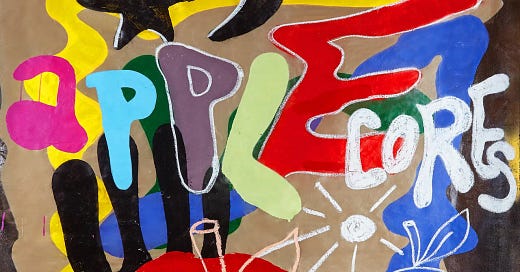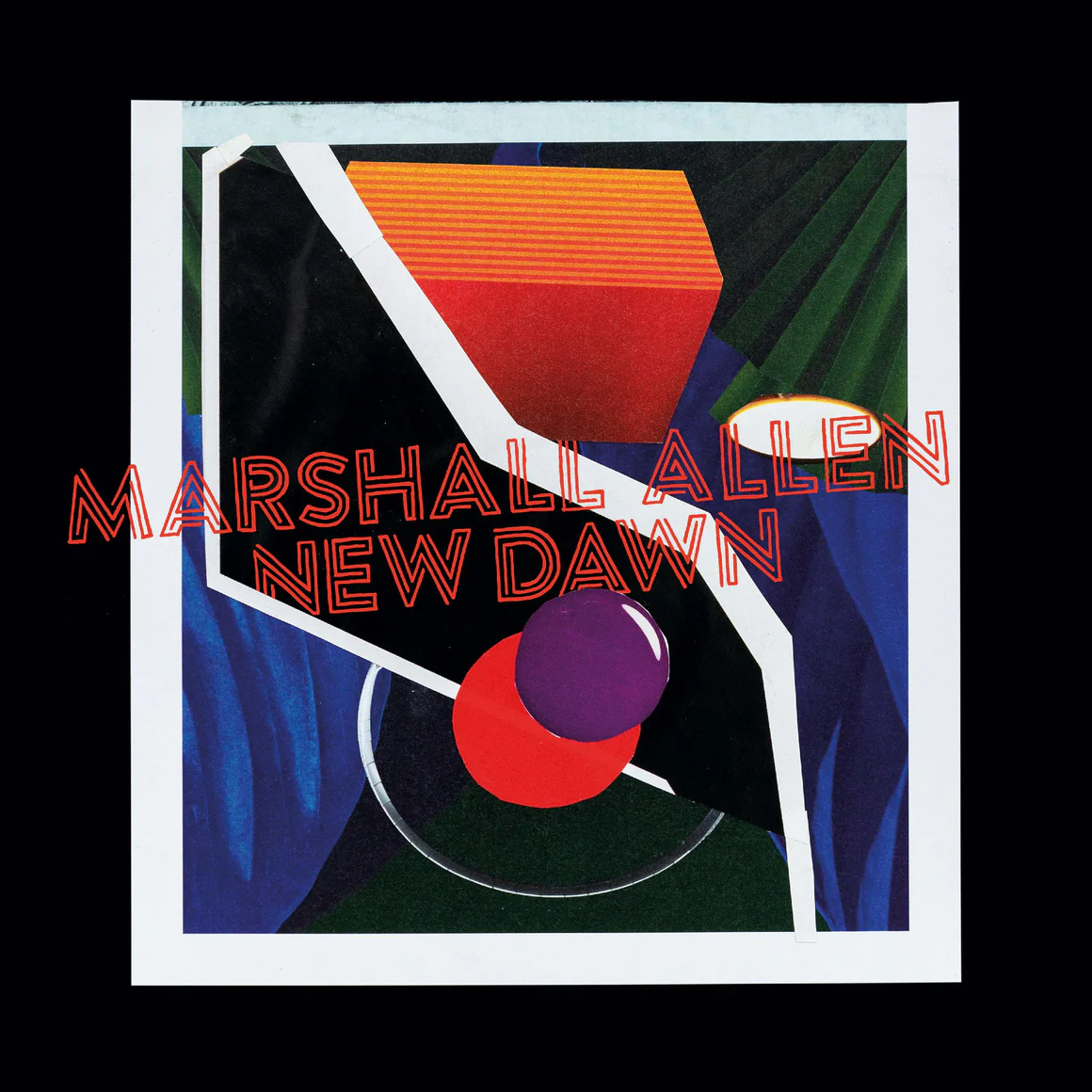Ancient Histories
The freewheeling saxophonist James Brandon Lewis summons the spirits of Amiri Baraka and Don Cherry, while centenarian Marshall Allen weaves a tapestry of swing, jazz, and funk.
James Brandon Lewis - Apple Cores
A recent write-up in The Washington Post describes the questing tenor saxophone player James Brandon Lewis as an “omnivore’s omnivore”— a musician whose intake of influences and creative stimuli is boundless and vast.
It comes as no surprise that his latest album, Apple Cores, takes its name from an influential column by the jazz critic Amiri Baraka, and draws further inspiration from the free jazz innovator Don Cherry— nor is it any surprise that Lewis doesn’t settle for paying literal tribute to these luminaries, instead internalizing and metabolizing these stimuli, then remaking them in his image.
The result is a feisty 40 minutes of mostly-original material, and its telling that the lone cover is a reimagined version of “Broken Shadows,” by boundary-breaker Ornette Coleman— another obvious lodestar for Lewis’ inquisitive spirit. Apple Cores is built on burly trio performances, with Lewis blowing raucous riffs over the adaptive rhythm section of Chad Taylor (drums, mbira) and Josh Werner (bass, guitar). It’s a setting that may feel familiar to listeners who first experienced Lewis via The Messthetics and James Brandon Lewis, last year’s muscular rock and roll team-up— only here, Lewis’ restlessness leads just as often to soulful grooves and boisterous street music as it does fiery punk.
Lewis’ trio recorded these songs in just two heavily improvised sessions. That loose, ragged spirit is most evident in the three “Apple Cores” tracks scattered across the album— jagged, combustive, confrontational, unerringly tuneful. “Apple Cores #3” may be the album’s energetic high point, a hip-shaking, finger-popping groove that’s animated by Lewis’ torrent of skronk and Werner’s rumbling bass— equal parts Sly Stone funk and On the Corner-era Miles Davis.
The album’s punk spirit is evident in its wild, unruly energy— all masking a tight, disciplined approach to rhythm, which Apple Cores has in abundance. It’s also present in the album’s brazen physicality. All three musicians hold more-or-less-equal position in the mix, which is to say that everything here sounds cranked to 11; the sheer loudness of Taylor’s pummeling drums announces “Five Spots to Caravan” with a jolt.
The drumming isn’t the only thing that sounds aggressive here. Lewis is in peak condition, playing with his usual loquacious swagger— his sax bobbing, weaving, and jabbing with the nimbleness of a battle rapper. (“While there’s no rhyming on Apple Cores, it isn’t hard to suss out raplike shapes in Lewis’s melodic phrasing,” reads Chris Richard's’ feature in the Post.) In “D.C. Got Pocket”— its title surely a reference to Don Cherry’s exploratory grooves— you can hear Lewis sneak one serpentine run after another between the clattering rhythms, his fire and fury never compromising his keen melodic ear.
On a handful of songs, Lewis plays with a hypnotic, droning approach that sounds indebted to Indian and Middle Eastern music. In “Prince Eugene,” his sax moans mesmerizing incantations over the delicate plunk of Taylor’s mbira, creating a kind of makeshift exotica. Even better is the charging take on “Broken Shadows,” where Lewis drones over a rumble of toms. These songs are coiled with tension— in fact, the only time the album’s intensity abates is on “Of Mind and Feeling,” a spacey palette-cleanser that wraps up the record’s opening act.
Apple Cores feels haunted by different spirits. There are the obvious references to Baraka and Cherry, both present as spiritual guides more than literal stylistic touchpoints. Meanwhile, Lewis’ cool, irreverent posture conveys a hip, underground attitude— not so far removed from New York’s tradition of avant luminaries like John Zorn. And then there’s Coleman, whose influence looms large— in particular, his funk-oriented Prime Time recordings, most notably Of Human Feelings, seem like touchstones for Lewis’ elastic, electric grooves.
And yet it’s Lewis’ own spirit that looms largest. He is a joyful noisemaker, a free-range melodist, and an utterly original interpreter of jazz traditions. With Apple Cores, he’s made some the most electrifying music of his career— pulling disparate influences into something that’s confident in its own skin.
My rating: 8.5 out of 10.
Marshall Allen - New Dawn
Marshall Allen— veteran sax player and bandleader for the Sun Ra Arkestra— recently turned 100; days later, he released the first-even album bearing his name on the cover, breaking the world record for oldest person to ever put out a debut album.
And yet, New Dawn is much more than an interesting piece of trivia. It’s a colorful, quietly confident, and casually virtuosic album that plays out like a loose musical autobiography, weaving a rich tapestry from strands of big band jazz, elegant swing, and percolating funk.
Given Allen’s age, it should come as no surprise that the album is largely fixated on time-tested idioms, many of them relics of the pre-war era. Opening song “African Sunset” commences the album not with a gallop but with a gentle Ellingtonian glide, conjuring the kind of romantic, slow-dance swing that would have been common in night clubs, well, 100 years ago. Allen graces this and several other tracks with a smooth, fluid playing that couldn’t be more distinct from James Brandon Lewis’ rumbunctious skronk; Allen is more content to play the loverman role of Lester Young or Ben Webster than he is to be an agitator.
The album’s easeful allure continues with the title track, a languid and sensual tune with sultry guest vocals from Nenah Cherry— along with rich woodwinds that sigh and caress. It’s a credit to the album’s warm production and fervid playing that, even when sticking to timeworn styles, it never sounds like a museum piece— the music is visceral and alive, never self-consciously old-timey.
Allen is not just a nimble horn player but an arranger of real finesse; every song here features accents from a full string section, and Allen orchestrates it with a masterful command of drama and texture. In “Are You Ready,” a hearty jump blues, driving rhythms shift back and forth between spirited horns, loose-limbed guitars, and the full sweep of the orchestra, maintaining forward propulsion while cycling through different tones and colors.
That song signals a pivot in the album’s back half, as it moves into fare that’s both more energetic and more adventurous. One of the highlights of the record is “Sonny’s Dance,” a rowdy bop tune where Allen varies his tender reed work with wails of hoarse blues. It’s a barn burner, but it almost feels like a warm-up for the album’s centerpiece, “Boma”— a 10-minute afrobeat groove that conjures blissful funk from a sizzling horn section and cinematic flourishes from the string section, imbuing the whole piece with a hint of menace.
It’s remarkable to thing that, after so many decades spent making music, Allen is embarking on a fresh start— but if the title of New Dawn feels particularly poignant coming from a centenarian, the album itself suggests that it’s never too late to mine the tried-and-true for renewed inspiration.
My rating: 7.5 out of 10.






